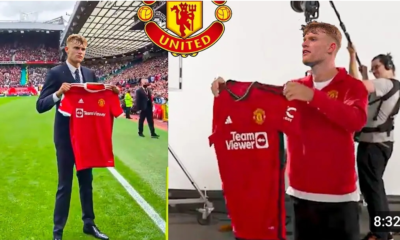Blog
Breaking: Michigan State basketball Announces Plans to Launch Second Basketball Team Aside from Michigan State basketball team, Sparking Excitement and Surprise
Breaking: Michigan State Basketball Announces Plans to Launch Second Basketball Team Aside from North Carolina Basketball Team, Sparking Excitement and Surprise
In a groundbreaking development that could redefine the landscape of college basketball, Michigan State University has announced its plans to establish a second men’s basketball team, an unprecedented move among NCAA programs that has both stunned and excited fans, players, and analysts nationwide. This innovative initiative aims to expand opportunities, foster player development, and position Michigan State as a pioneer in collegiate sports restructuring.
—
### A Historic Shift in Collegiate Basketball
Michigan State’s basketball program, renowned for its rich history of success under legendary coach Tom Izzo, has long been a formidable force in the NCAA. With multiple Final Four appearances, NCAA championships, and a reputation for developing NBA-ready talent, the Spartans are a basketball powerhouse rooted in tradition and excellence. Now, the university is proposing a bold new chapter—adding a second team to operate alongside the existing Spartans squad.
This announcement has sent ripples through the college sports community, prompting questions about the future of NCAA competition, player development, and the potential new model for collegiate athletics nationwide.
—
### The Vision Behind the Second Team
Michigan State’s athletic director, Mark Dantonio, articulated the vision behind this pioneering move during a press conference held yesterday on campus. “Our goal is to innovate and lead in college basketball,” Dantonio stated. “The establishment of a second team—what we’re calling the MSU Spartans B-Team—will create a new pathway for talented players, enhance our program’s depth, and set a new standard for collegiate sports.”
He elaborated that the second team would serve multiple strategic purposes:
– **Opportunities for Underrated and International Players:** Many talented athletes, especially those from international backgrounds or overlooked in recruiting, often find limited spots on traditional rosters. The new team will provide a platform for these athletes to develop, showcase their skills, and potentially earn a place on the main squad or professional opportunities.
– **Player Development and Transition:** The second team will act as a developmental squad, similar to farm systems in professional sports leagues, allowing younger or less experienced players to gain valuable game time and coaching before competing at the highest NCAA level.
– **Enhancing Competitive Depth:** Creating a second team will allow Michigan State to have a broader talent pool, fostering internal competition that can elevate the main team’s performance and resilience.
– **Attracting Top Talent:** The new team’s existence will make Michigan State an even more attractive destination for recruits seeking robust development opportunities and a clear pathway to professional basketball.
—
### Structural and Operational Details
The new team, temporarily dubbed the “MSU Spartans B-Team,” will be integrated into a newly formed developmental division within NCAA college basketball. The team will initially compete in regional leagues and exhibition tournaments, with aspirations to join the NCAA’s official competitions within a few seasons.
Key features include:
– **Dedicated Facilities:** The B-Team will operate out of a state-of-the-art training complex adjacent to the Breslin Center, with specialized coaching, medical, and academic support staff to ensure holistic development.
– **Recruitment Strategy:** The program will actively scout high school talent nationally and internationally, offering scholarships and development contracts. The roster is expected to focus heavily on freshmen and sophomores, providing them with a nurturing environment to grow.
– **Coaching Staff:** Michigan State has appointed veteran assistant coach Mike Williams to lead the B-Team, bringing extensive experience in player development and talent scouting. The coaching staff will work closely with the main team’s staff to ensure alignment and facilitate player movement between squads.
– **Academic and Player Welfare Support:** Like the main program, the B-Team will emphasize academic excellence, mental health, and life skills, ensuring that athletes receive comprehensive support throughout their development.
—
### Broader Implications and Reactions
The announcement has sparked widespread discussion among college basketball insiders, fans, and sports journalists. Many see this as a potential game-changer that could influence the structure of NCAA athletics in the coming years.
**Positive Reactions:**
– **Player Development advocates** praise the move as a way to provide more playing time and growth opportunities for talented athletes who might otherwise be overlooked.
– **Recruiters and programs** see this as an innovative approach to attracting top talent, with the potential to create a pipeline of future NBA prospects and professional players.
– **Fans and alumni** are excited about Michigan State’s leadership in pioneering a new model of collegiate basketball, which could increase the sport’s competitiveness and fan engagement.
**Skeptics and Concerns:**
– **NCAA Regulations:** Critics question whether the NCAA will approve the dual-team model under existing rules, and whether this could lead to regulatory conflicts or necessitate rule changes.
– **Financial Sustainability:** The significant investment required for facilities, staffing, and operations raises questions about the financial sustainability of maintaining two teams at a high competitive level.
– **Competitive Fairness:** Some opponents worry that creating a second team might give Michigan State an unfair advantage over other programs that do not adopt similar models, potentially altering the competitive balance across conferences.
– **Player Welfare:** Ensuring that student-athletes are not exploited or overworked in the new structure will be a crucial concern, with advocates emphasizing the importance of academic and mental health support.
—
### The Future of Michigan State Basketball
Michigan State’s leadership envisions this second team as part of a broader strategic vision to remain at the forefront of college basketball innovation. The B-Team is set to begin practice immediately and participate in regional exhibition games this upcoming season, with plans to officially join NCAA competitions in the subsequent years.
The university also aims to leverage this model to boost recruitment efforts, attract international talent, and build a more diverse and dynamic roster. Additionally, the program intends to serve as a testing ground for innovative coaching techniques, sports science integration, and athlete wellness programs.
**Long-term Goals include:**
– Establishing a sustainable pipeline of talent that feeds into the main team.
– Creating a legacy as the first NCAA program to fully implement a dual-team structure.
– Enhancing Michigan State’s brand as a leader in college sports innovation.
—
### Reactions from the College Basketball Community
The announcement has garnered reactions from various stakeholders:
– **Tom Izzo, Michigan State Head Coach:** “We’re excited about this new chapter. Our primary goal is to develop players and win championships, and this new model gives us a chance to do both at an even higher level.”
– **Prominent College Coaches:** Many have expressed curiosity and support, viewing Michigan State’s move as a bold step towards modernizing college basketball.
– **NCAA Officials:** While some are cautious, others are intrigued by the potential benefits and are reportedly engaging in discussions about regulatory adjustments to accommodate this new model.
– **Players and Recruits:** Current and prospective student-athletes have shown interest, seeing the second team as an opportunity to develop their skills in a competitive environment with clear advancement pathways.
—
### Potential Challenges and Criticisms
Despite widespread interest, the initiative is not without challenges:
– **Regulatory Approval:** The NCAA will need to evaluate and potentially revise rules regarding team structures, scholarships, and competition eligibility.
– **Resource Allocation:** Maintaining two high-level teams requires substantial financial and logistical resources, which may impact other athletic programs or university priorities.
– **Balancing Competition and Development:** Ensuring that the secondary team complements the main squad without diluting the program’s focus will be essential.
– **Player Welfare and Academic Integrity:** The university must uphold rigorous standards to prevent exploitation, overtraining, or neglect of academic responsibilities.
—
### Conclusion: A New Era for Michigan State?
Michigan State’s announcement to launch a second basketball team marks a historic and innovative step in college athletics. If successfully implemented, it could serve as a blueprint for other programs seeking to modernize, diversify, and elevate their athletic offerings.
This move underscores Michigan State’s commitment to excellence and innovation, embracing a future where college basketball is more inclusive, competitive, and player-centered. While hurdles remain, the university’s vision signals a willingness to challenge traditional models and pioneer new pathways for student-athletes.
As the college basketball community watches closely, one thing is clear: Michigan State’s bold step sets the stage for a new chapter in collegiate sports, one that could redefine how talent is nurtured, developed, and showcased across the nation.
-

 Arsenal2 years ago
Arsenal2 years agoSad News Arsenal ex player who is goal scorer confirmed dead this morning
-

 Liverpool2 years ago
Liverpool2 years agoSad News Sadio Manè Confirmed Dead Today By Sky Sports Reporters, Open For Full Story 👇
-

 Blog1 year ago
Blog1 year ago“I was forcefully removed from Manchester United squad and now I’ve joined the best team in the world…I will revenge and as a result, I’ve ordered my friend who’s their best player currently to leave there with immediate effect and he has agreed”: Former Man United player angered by United decision to removed him from the squad as he ordered the Club’s best player to leave immediately.
-

 Blog1 year ago
Blog1 year agoSad News: Manchester United player died when playing for his country England yesterday 😢 😔
-

 Blog2 years ago
Blog2 years agoR.I.P: Formal Real Madrid and France international confirm death this morning
-

 Chelsea2 years ago
Chelsea2 years agoBreaking New:”Roman Abramovich could get Chelsea back”? Chelsea owner review the conversation between him and Roman Abramovich in. Deal about getting Chelsea back
-

 Blog2 years ago
Blog2 years agoUNBELIEVABLE: Manchester City midfielder KELVIN DE BRUYNE divorced wife this morning after DNA test revealed their 5 years old son belongs to formal Manchester United player
-

 Manchester United1 year ago
Manchester United1 year agoOFFICIAL NOW: Manchester United announce the signing of 23yr sensational player after beating Liverpool and Madrid for His signature, agreement reached on a 5yr deal, Medical completed – announcement ongoing












